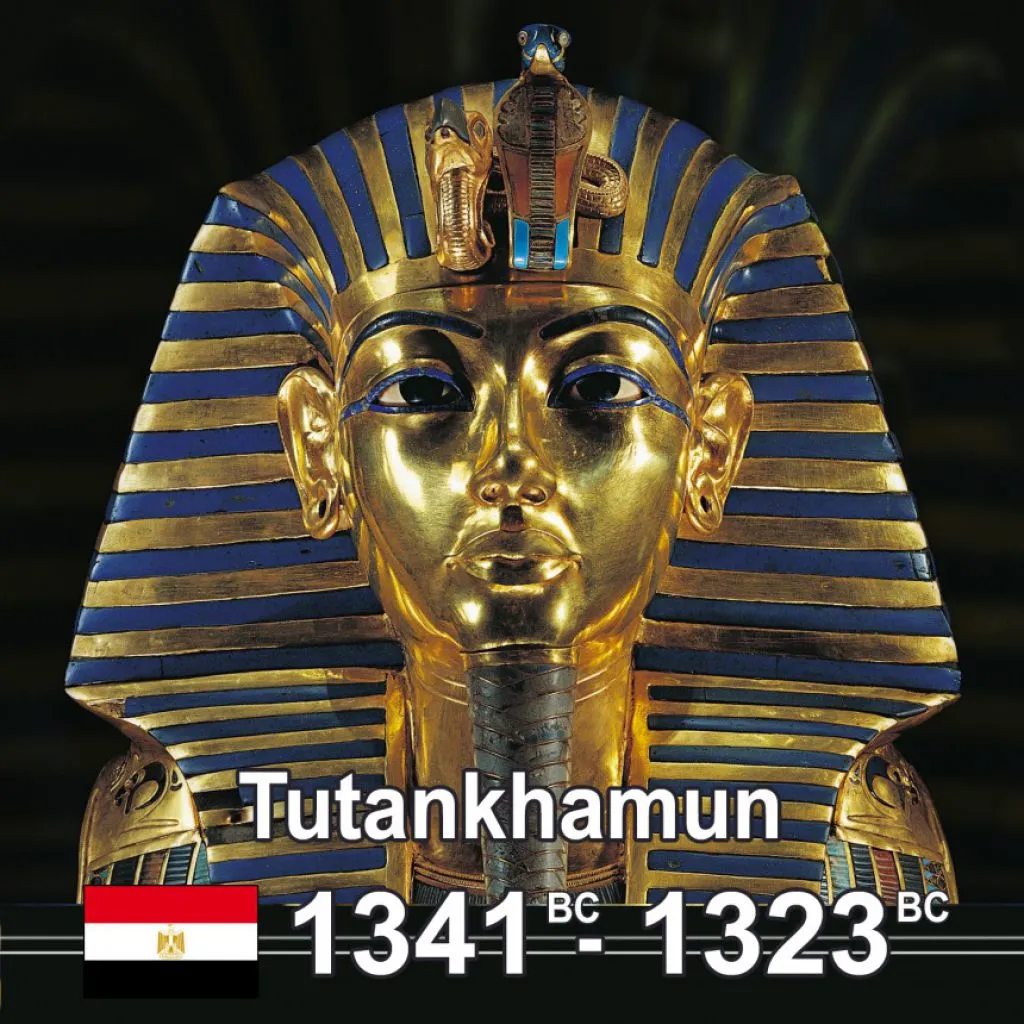
Tutankhamun
Tutankhamun was an Egyptian pharaoh of the 18th dynasty (ruled c. 1332-1323 BC in the conventional chronology), during the period of Egyptian history known as the New Kingdom or sometimes the New Empire Period.
Tutankhamun has, since the discovery of his intact tomb, been referred to colloquially as King Tut. His original name, Tutankhaten, means "Living Image of Aten", while Tutankhamun means "Living Image of Amun". In hieroglyphs, the name Tutankhamun was typically written Amen-tut-ankh, because of a scribal custom that placed a divine name at the beginning of a phrase to show appropriate reverence. He is possibly also the Nibhurrereya of the Amarna letters, and likely the 18th dynasty king Rathotis who, according to Manetho, an ancient historian, had reigned for nine years—a figure that conforms with Flavius Josephus's version of Manetho's Epitome.
The 1922 discovery by Howard Carter of Tutankhamun's nearly intact tomb, funded by Lord Carnarvon, received worldwide press coverage. It sparked a renewed public interest in ancient Egypt, for which Tutankhamun's mask, now in the Egyptian Museum, remains the popular symbol. Exhibits of artifacts from his tomb have toured the world. In February 2010, the results of DNA tests confirmed that he was the son of the mummy found in the tomb KV55, believed by some to be Akhenaten. His mother was his father's sister and wife, whose name is unknown but whose remains are positively identified as "The Younger Lady" mummy found in KV35. The "mysterious" deaths of a few of those who excavated Tutankhamun's tomb has been popularly attributed to the curse of the pharaohs.
LIFE
Tutankhamun was the son of Akhenaten (formerly Amenhotep IV) and one of Akhenaten's sisters, or possibly one of his cousins. As a prince, he was known as Tutankhaten. He ascended to the throne in 1333 BC, at the age of nine or ten, taking the throne name Nebkheperure. His wet nurse was a woman called Maia, known from her tomb at Saqqara. His teacher was most likely Sennedjem.
When he became king, he married his half-sister, Ankhesenpaaten, who later changed her name to Ankhesenamun. They had two daughters, both stillborn. Computed tomography studies released in 2011 revealed that one daughter was born prematurely at 5–6 months of pregnancy and the other at full-term, 9 months. No evidence was found in either mummy of congenital anomalies or an apparent cause of death.
REIGN
Given his age, the king probably had very powerful advisers, presumably including General Horemheb (Grand Vizier Ay's possible son in law and successor) and Grand Vizier Ay (who succeeded Tutankhamun). Horemheb records that the king appointed him "lord of the land" as hereditary prince to maintain law. He also noted his ability to calm the young king when his temper flared.
In his third regnal year, under the influence of his advisors, Tutankhamun reversed several changes made during his father's reign. He ended the worship of the god Aten and restored the god Amun to supremacy. The ban on the cult of Amun was lifted and traditional privileges were restored to its priesthood. The capital was moved back to Thebes and the city of Akhetaten abandoned. This is when he changed his name to Tutankhamun, "Living image of Amun", reinforcing the restoration of Amun.
As part of his restoration, the king initiated building projects, in particular at Karnak in Thebes, where he dedicated a temple to Amun. Many monuments were erected, and an inscription on his tomb door declares the king had "spent his life in fashioning the images of the gods". The traditional festivals were now celebrated again, including those related to the Apis Bull, Horemakhet, and Opet. His restoration stela says:
The temples of the gods and goddesses ... were in ruins. Their shrines were deserted and overgrown. Their sanctuaries were as non-existent and their courts were used as roads ... the gods turned their backs upon this land ... If anyone made a prayer to a god for advice he would never respond.
The country was economically weak and in turmoil following the reign of Akhenaten. Diplomatic relations with other kingdoms had been neglected, and Tutankhamun sought to restore them, in particular with the Mitanni. Evidence of his success is suggested by the gifts from various countries found in his tomb. Despite his efforts for improved relations, battles with Nubians and Asiatics were recorded in his mortuary temple at Thebes. His tomb contained body armor and folding stools appropriate for military campaigns. However, given his youth and physical disabilities, which seemed to require the use of a cane in order to walk (he died c. age 18), historians speculate that he did not personally take part in these battles.
































